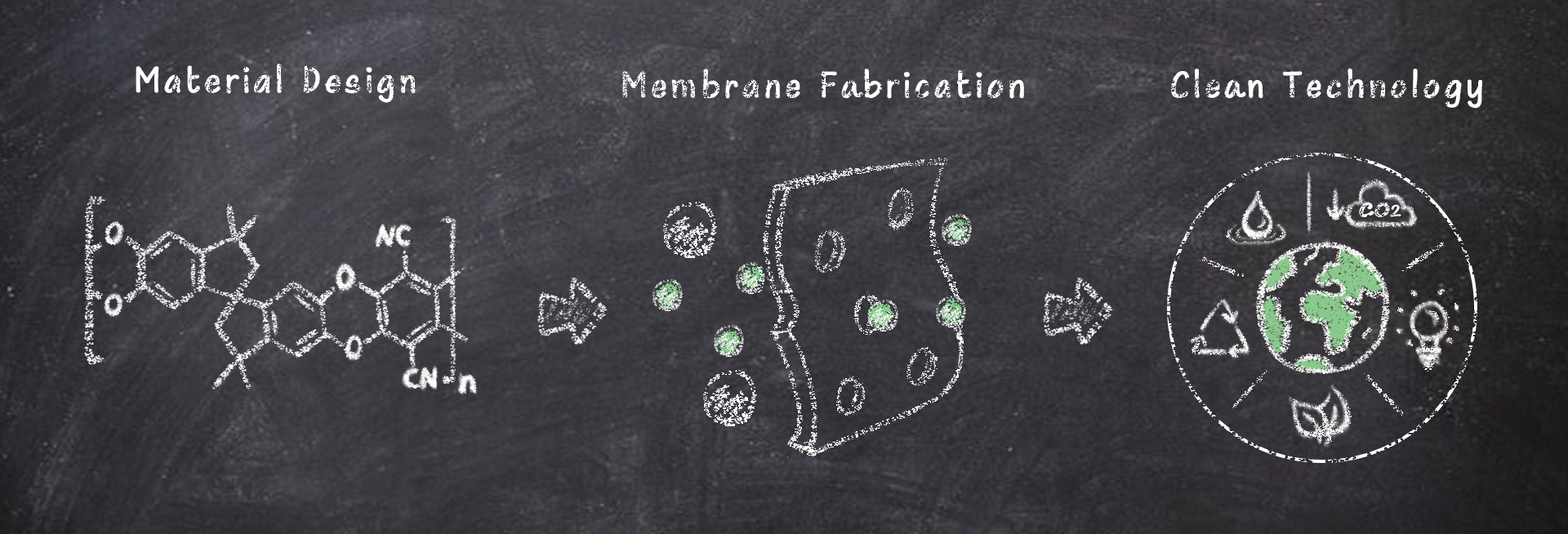Research
We design porous materials and develop membrane technologies
to tackle
pressing challenges in energy and the environment.

We design porous materials and develop membrane technologies
to tackle
pressing challenges in energy and the environment.

We start with a question: What should this material do? Guided by function, we design and synthesise porous materials with just the right features for specific tasks.
Our work focuses on (but is not limited to):
• Design and synthesise building blocks with concavities that, when combined, create large, interconnected free volumes in the solid state.
• Introduce functional groups to confer specific properties. For example, incorporating ion-conducting groups such as –SO₃⁻ or –COO⁻ enables efficient ion transport.

The structure of the materials shapes membrane performance. We develop membranes at all scales and explore how structural features influence membrane properties and behaviour. Our work includes:
• Designing pore channels so that molecules can move through them efficiently and selectively. We do this by adjusting their shape, rigidity, length, and chemistry, and by adding functional groups or gradients.
• Making membranes in different forms, such as strong self-standing films or thin layers coated onto a support. These can be shaped as hollow fibres or flat sheets, depending on the needs of the separation process.
• Using a range of fabrication methods suited to the material. These include simple techniques like solution casting and spin coating, scalable methods such as roll-to-roll processing, phase inversion, and interfacial polymerisation, as well as newer approaches like electrospinning, dip-coating, and even 3D printing.

We engineer membranes for real-world use! Our goal is to deliver sustainable solutions for clean energy and environmental challenges using these smart materials. Applications include:
• Energy storage & conversion – Batteries, electrolysers, and fuel cells store renewable energy and produce clean fuels, reducing dependence on fossil fuels.
• Carbon capture – Capturing carbon dioxide helps fight climate change by cutting emissions from power plants and industries.
• Oil refining & petrochemicals – More efficient separations reduce energy use and emissions in essential chemical industries.
• Pharmaceutical purification – Precise separations ensure safe medicines while lowering waste and costs in drug production.
• Resource enrichment – i.e., uranium enrichment supports nuclear power, a reliable source of low-carbon energy.
• Resource recovery – i.e., lithium recovery addresses the growing demand for batteries in electric vehicles and large-scale energy storage.
